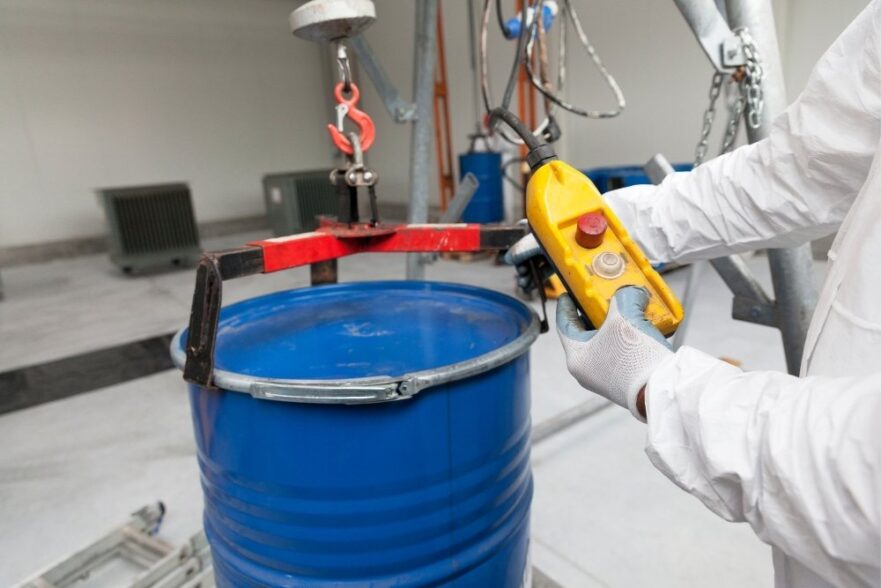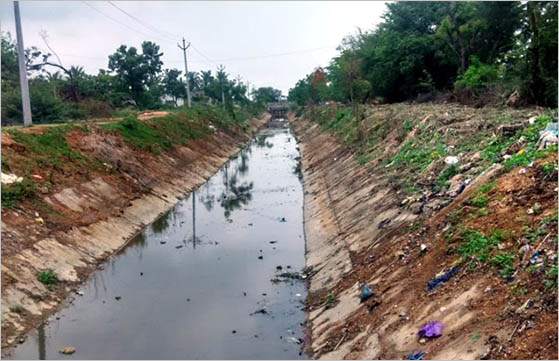Leading Industrial Wastewater Treatment Solutions: Guaranteeing Conformity and Efficiency
Leading Industrial Wastewater Treatment Solutions: Guaranteeing Conformity and Efficiency
Blog Article
Comprehending the Comprehensive Process of Liquid Garbage Disposal: Finest Practices and Environmental Effect Factors To Consider
The monitoring of fluid garbage disposal is a multifaceted concern that needs a complete understanding of numerous best methods and their connected environmental effects. From the kinds of liquid waste produced to the approaches used for collection, therapy, and final disposal, each action plays a vital duty in securing communities and public wellness. As regulatory criteria develop and modern technology advancements, the conversation around these procedures becomes significantly significant. What ramifications do these changes hold for future sustainability initiatives, and exactly how can stakeholders make certain that they are properly attended to?
Types of Liquid Waste
Understanding the various sorts of liquid waste is important for reliable management and disposal methods. Fluid waste can be generally classified into numerous kinds, each calling for special handling and therapy techniques.
Industrial liquid waste often includes dangerous materials, including hefty metals, solvents, and chemicals, created during producing procedures. These wastes necessitate strict governing compliance to secure human health and the atmosphere. Domestic liquid waste mostly refers to wastewater produced from families, including sewage and greywater, which, although less toxic, can still posture considerable risks if incorrectly taken care of.
Agricultural fluid waste, including overflow from farms, usually has fertilizers and pesticides that can lead to environmental destruction otherwise treated sufficiently. Medical fluid waste, created from health care facilities, consists of infected liquids such as bodily liquids and chemicals, requiring specialized disposal techniques to stop infection and environmental contamination.
Finally, oil and grease waste, usually produced by restaurants and automobile markets, can create extreme clogs in sewage system systems if not handled appropriately. Understanding these classifications assists in targeted strategies for treatment, conformity with laws, and efficient disposal approaches, eventually promoting environmental sustainability and public wellness security.

Collection Techniques
Reliable collection methods are important for the correct management of liquid waste, ensuring that it is collected securely and successfully before treatment or disposal. Various methods are employed depending upon the kind of liquid waste produced, the quantity, and the particular characteristics of the waste.
One common technique is making use of specialized collection containers or sumps, which are designed to catch liquid waste at the source. These systems commonly incorporate pumps that facilitate the transfer of waste to larger storage space containers or treatment centers. Additionally, mobile collection devices equipped with vacuum innovation are used in circumstances where waste is produced intermittently or in hard-to-reach places.
For commercial settings, closed-loop systems can properly reduce leaks and spills, permitting the recovery and reuse of liquid waste. It is additionally important to train personnel on appropriate collection protocols to mitigate risks connected with dangerous substances.
Furthermore, carrying out regular maintenance routines for collection tools makes sure optimal performance and safety and security. The assimilation of innovative monitoring systems can boost collection effectiveness by giving real-time information on waste degrees and potential dangers. In general, reliable collection techniques are fundamental to lasting liquid waste monitoring techniques.
Therapy Procedures
Treatment processes play an essential role in the management of liquid waste, transforming possibly unsafe products right into reusable sources or risk-free effluents - liquid waste disposal. These processes can be extensively classified right into physical, chemical, and biological methods, each tailored to resolve details contaminants present in the waste stream
Physical treatment methods, such as sedimentation and filtering, job by eliminating suspended solids and particulate matter. These techniques are usually the primary step in the treatment chain, properly decreasing the lots on subsequent processes. Chemical therapies involve the use of reagents to reduce the effects of damaging compounds, speed up heavy metals, or oxidize organic contaminants, consequently enhancing the security of the effluent.
Organic treatment procedures, consisting of turned on sludge systems and anaerobic food digestion, take advantage of the all-natural capabilities of microbes to weaken raw material. These methods are especially efficient for wastewater containing naturally degradable pollutants. Advanced treatment technologies, such as membrane filtration and advanced oxidation procedures, are increasingly utilized to accomplish higher degrees of purification.
Including a combination of these therapy methods not just makes certain compliance with regulative standards but also advertises environmental sustainability by recuperating valuable sources from fluid waste.
Disposal Options
Just how can organizations make certain the accountable and safe disposal of fluid waste? Reliable disposal options are vital for guarding public wellness and the setting. The key approaches consist of land disposal, incineration, and therapy adhered to by discharge into municipal wastewater systems.
Land disposal includes the cautious control of liquid waste in assigned landfills, making sure that it does not seep right into surrounding soil or water. Incineration, on the other hand, subjects liquid waste to high temperature levels, converting it right into ash and gases, which require proper purification to lessen emissions. This approach appropriates for contaminateds materials that can not be treated via conventional means.
In instances where liquid waste can be treated, organizations may go with chemical or organic therapy procedures to counteract damaging elements prior to releasing the treated effluent into community systems. This course usually straightens with regulatory needs, making sure that the effluent satisfies safety requirements.
Inevitably, organizations have to carry out detailed evaluations of each disposal alternative to identify its stability, taking into consideration variables such as waste composition, regulatory compliance, and prospective risks to health and the atmosphere. By picking ideal disposal methods, businesses can add to a liable waste administration method.
Environmental Effect
The ecological impact of fluid waste disposal is a vital factor to consider for companies looking for to lessen their ecological impact. Additionally, the discharge of unattended or improperly treated waste right into surface waters can result in eutrophication, leading to oxygen exhaustion and industrial wastewater treatment solutions the succeeding death of fish and various other microorganisms.

To alleviate these effects, companies must adopt finest practices such as executing strenuous waste therapy procedures, promoting recycling and reuse, and adhering to regulatory standards. By taking a proactive method to liquid waste administration, entities can significantly decrease their environmental impact while sustaining lasting growth goals. Ultimately, a detailed understanding of the environmental impacts connected with fluid garbage disposal is necessary for notified decision-making and liable stewardship of natural deposits.
Verdict
Reliable management of liquid waste is crucial for protecting environmental stability and public health. Eventually, a detailed understanding of fluid waste disposal not just mitigates environmental impacts but also cultivates a dedication to responsible source management and ecological stewardship.
The monitoring of fluid waste disposal is a diverse concern that calls for a complete understanding of numerous finest practices and their associated ecological influences. From the types of liquid waste created to the techniques utilized for collection, therapy, and final disposal, each action plays an important duty in safeguarding environments and public health and wellness.The ecological impact of fluid waste disposal is an important factor to consider for organizations seeking to reduce their ecological impact. Inevitably, an extensive understanding of the environmental effects associated with liquid waste disposal is essential for educated decision-making and accountable stewardship of all-natural sources.
Ultimately, a comprehensive understanding of fluid waste disposal not just mitigates environmental influences however additionally promotes a dedication to responsible source administration and ecological stewardship.
Report this page